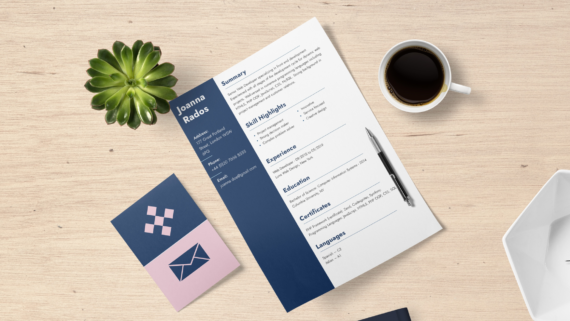
Your resume can be seen as your messenger, sent ahead to represent you. Consequently, it is a good practice to make sure that your curriculum vitae is laid out attractively so that you can be invited to present yourself in person.
Here are a few tips on how you can create a resume to help you book your next job interview.
- Place your top performance details first
To introduce you in your best light, place the details that you are most proud of first. For each experience in your professional profile, highlight the occasions where you have displayed strong competences at the beginning. These include academic and professional certifications, social achievements such as special awards and acknowledgments.
Highlighting your most recent achievements first is also a good practice. If you have won an award this year for resolving the most customer complaints, and a sporting award when you were in high school, put the one you earned in the past year first.
By showing your potential employer your professional radiance from the get-go, you will immediately show your unique value adding traits.
- Present a clean layout
In recent years, many resume formatting templates have become available to help first-time and even seasoned professionals showcase their academic and work experiences. There are however, a few key elements that should be borne in mind regarding resume layout to allow for easier navigation and comprehension of professional life story.
- Fonts and font size – choose common sans serif fonts such as Arial to allow for reader’s eyes to pick up the key information. Do try to make the font size at least 10 or 12pts so that the text can be read easily. You do not want the font size to be too small or too large. Too small might lead your reader to put it away because of the difficulty to see clearly and too large may result in your resume having too many pages.
- Spacing – give adequate spacing between lines and between headers, sub-headers and main text. Line spacing of 1.5 inches is usually acceptable. Also be mindful of margins and not use too wide or too large margins. Keeping margins at 0.75 inch to 1 inch is a safe choice.
- Colours – you can show your personality or highlight headers and subheaders with colour variation on your resume. Choose a colour that still delivers a professional tone and try not to use more than one colour to complement the basic black text and neutral background.
- Look online for keywords used in job postings to refine your skills listing
Reviewing job postings within your industry can help you to identify skill gaps, for which short courses, seminars and other upskilling activities can help you close. Those job posting reviews can also help you identify key words used to describe critical skills that you may already possess. You can then use that skill list that you have compiled to reword your skill set listing on your resume; making your profile more attractive for head hunters and human resource teams. For example, if your review shows that “able to work with multiple teams” is a frequent skill set desired in job postings, then you may want to consider adding “flexible team player” to your skills list.
- Use active words that show accomplishments
Using positive/affirmative words to describe your accomplishments moves your work history and achievements out of the passive lane into the active/proactive lane. These would include words such as “delivered”, “provided”, “earned” and “exceeded”.
- Proofread for errors
Once you have all the relevant content included in your resume, ensure that it is free of spelling and grammatical errors as such errors may be a turn off to employers reviewing your resume. A resume free of errors or having few errors, gives the impression that the applicant takes care in their work and tries to make a good impression.
It always helps to have an objective eye reviewing your resume, so that they can pick up what you may have missed.
- Have more than one version to fit different jobs
It is good practice to have two to three versions of your resume to fit different types of jobs. For example, if you have experience and skills that traverse industries such as software design, customer service and social media management, you could have three different versions to address each industry’s needs.
For each version, you would lead with your experiences, accreditation and skills that most fit that particular job category. Having different versions can allow you to quickly respond to job openings by promptly submitting your resume option that best matches the job opening.
Now would be a good time to have a closer look at your resume and start making the changes that will give you the edge in standing out.

